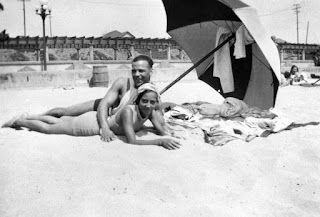 |
| President-elect Trump on the campaign trail usnews.com |
Yours truly is back after a descent into the WiFi black hole. Today is Wednesday which means it is time for Blogger Candidate Forum. Today we are going to look at Donald J. Trump, the law-and-order president. Specifically, how will new president reshape urban law enforcement? This is the question that George Joseph ponders in his CityLab article "The New Top Cop: How President Trump Might Reshape Urban Policing." Mr. Joseph speculates, "Border patrol and police militarization will likely grow. And federal pressure for reform is likely finished." As a candidate, Mr. Trump frequently drew cheers for his spirited defense of police in the wake of protests over police-involved shootings. Mr. Trump called police, the most mistreated people in America. This earned him the endorsement for major law enforcement associations like the Fraternal Order of Police and the National Border Patrol Council. The question Mr. Joseph asks, "...what would a President Trump do to support law enforcement or change policing?"
 |
| Anti-Trump protestors outside Trump Tower New York City, New York thevillager.com |
 |
| "Make America Safe Again" thewrap.com |
AV: I don't think he will have a big effect on localities because he won't have tons of money to throw around from Congress...One should not overstate the importance of federal policy on local policing. You have 18,000 local police departments that are largely autonomous, and there's very little evidence that federal oversight has made much of a difference...I think he will mostly reshape policing in terms of federal law enforcement.
 |
| Pro-Trump protestors therightscoop.com |
AV: Number one, the loss of these Department of Justice investigations is clearly gonna happen. There was almost nothing under Bush, so there will be nothing in the way of these broad pattern and practice investigations pressuring department to reform...and the investigations won't be cut off overnight. But over time, we'll see no new investigations being undertaken, and actual litigation won't be approved.
Two, is the militarization of policing. We can expect that access to military weapons that Obama limited will most likely expanded. And any strings for federal policing grant money that may have existed-and have been very weak anyway-now those will be gone.
Third, is the impact on federal law enforcement, ramping up the size of Border Patrol, which is already now the the largest law enforcement agency...
 |
| "Build that wall" Anaheim, California nydailynews.com |
AV: There are definitely limits. The logistics are quite daunting. You would have to create massive new bureaucracies and detention centers...and he would have to get a fiscally conservative Congress to go along with it. He can, however, begin to make incremental changes, shifting priorities within budgets.
Right now border patrol can stop anyone within a 100 miles of the border without probable cause. We could see a big increase in these kinds of checkpoints operations. Operation Wetback [in 1954] was able to deport over a million people a year; there is no reason why they couldn't start moving that direction...
 |
| NYPD settlement on Muslim surveillance the guardian.com |
AV: Civil liberties groups will have their hands full trying to monitor what is going on. If you have Rudy Giuliani as attorney-general (Blogger note: Senator Jeff Session (R-Alabama) was nominated for Attorney-General) and Chris Christie heading the Department of Homeland Security, there will be repeated constitutional violations: They're going to try to do more warrantless surveillance, build questionable cases against people, more entrapment of vulnerable people, etc...And I think it will involve local police extensively too, because now you have all these post-9/11 fusion centers and joint task forces, so you can expect local police to be pulled into these investigations.
 |
| CPR on the march Photograph by YR Kim changethenypd.com |
AV: The attempts to get departments to experiments with practices based on federal research into best practices will likely evaporate, such as trying to reduce use of force against mentally health problems, or efforts to develop crime prevention strategies with communities. This issue...has become politicized, and divorced from rational consideration of evidence practices.
George Joseph writes, "That research is no longer relevant. The question will now be: Does the 'reform' fit with the new kind of authoritarianism that Trump has campaigned on?" This why President-elect Donald Trump received the backing of many national law enforcement organizations. The Blue Lives Matter is looking to Mr. Trump to validate their punitive approach to law-and-order.










































